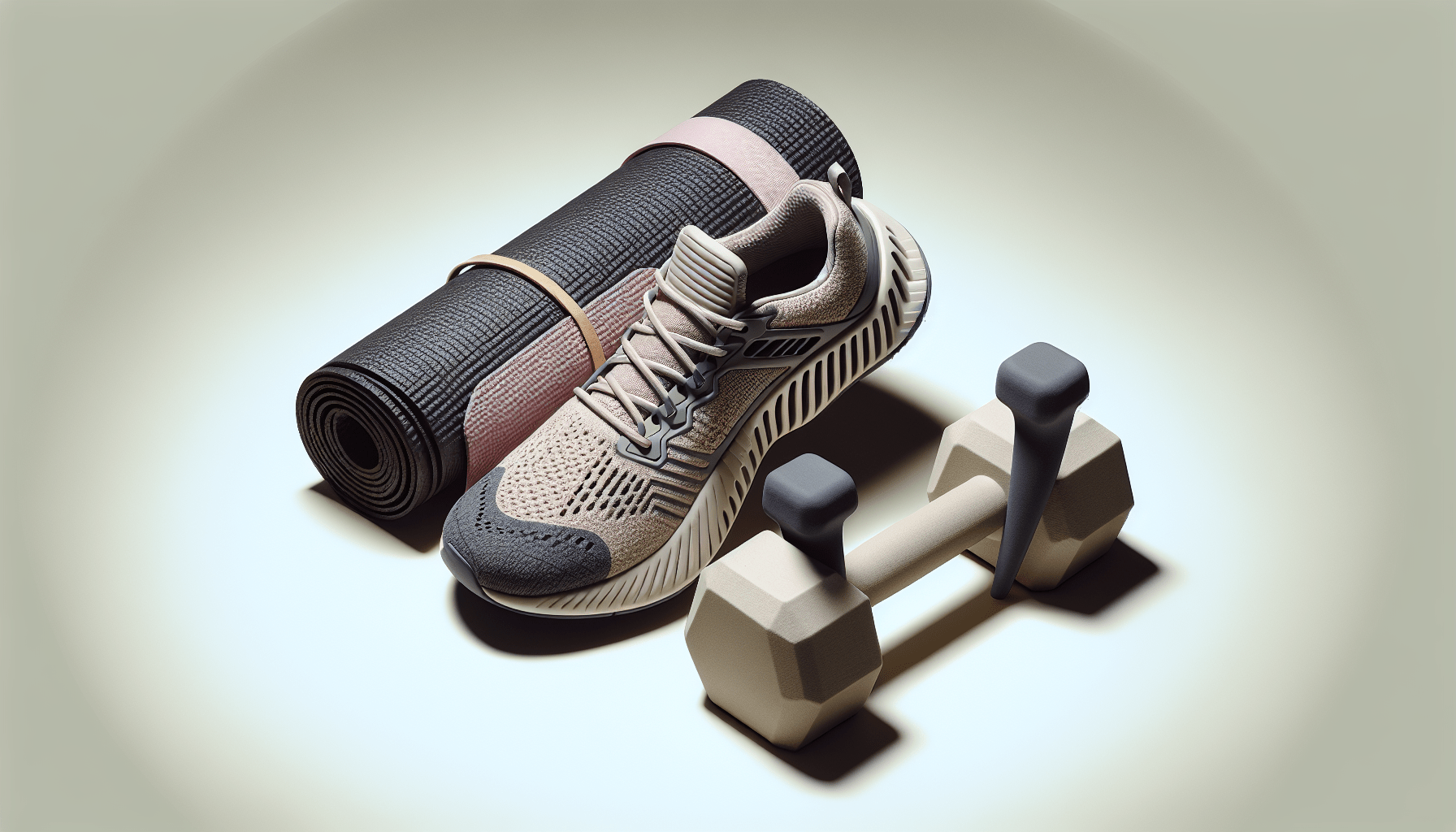What Exercise Is Best For Joints?
Have you ever wondered what kind of exercise is most beneficial for your joints? Maintaining healthy joints is crucial for overall mobility and quality of life. Whether you’re dealing with arthritis, recovering from an injury, or just trying to keep your joints in top shape, choosing the right type of exercise can make a world of difference. But with so many options out there, it can be challenging to figure out where to start.

Understanding Joint Health
What Are Joints?
Joints are essentially the connection points between your bones. They play a crucial role in making your body flexible and allowing movement. Joints are classified based on their structure and function. The three main types of joints include:
| Type | Description | Example |
|---|---|---|
| Fibrous | Fixed and immovable | Skull sutures |
| Cartilaginous | Partially movable | Spinal disks |
| Synovial | Freely movable | Knees, elbows |
Each type of joint serves a unique purpose, but synovial joints are the most common when we discuss exercise and movement. These joints have a flexible range of motion, which is why they are often the focus when we talk about joint health.
Why Joint Health Matters
Maintaining joint health is essential for numerous reasons. Strong, healthy joints allow you to move easily, enjoy physical activities, and perform daily tasks without discomfort. Conversely, unhealthy joints can lead to pain, stiffness, and even long-term mobility issues. Common conditions such as arthritis—whether osteoarthritis or rheumatoid arthritis—can significantly affect joint health, making it even more crucial to engage in exercises that support and strengthen your joints.
Benefits of Exercise on Joint Health
Pain Reduction
One of the most immediate benefits of exercise is pain relief. Regular physical activity helps to lubricate your joints, reduce inflammation, and release endorphins, which act as natural painkillers. Various studies have shown that low-impact exercises like swimming, cycling, and yoga can significantly reduce joint pain.
Improved Flexibility and Range of Motion
Keeping your joints flexible is key to maintaining a full range of motion. Stretching and flexibility exercises improve your ability to move freely and comfortably. For instance, practices such as yoga and Pilates contribute significantly to better flexibility and enhance your joint’s range of motion.
Strengthening Muscles Around Joints
Strong muscles act as a support system for your joints. Strength training exercises help build muscles that protect and stabilize your joints, preventing injuries and reducing stress on the joints themselves. Incorporating resistance training can substantially improve joint stability.
Enhanced Mobility and Quality of Life
A consistent exercise routine can significantly increase your overall mobility, making daily tasks easier and more comfortable. Improved joint health directly translates into a better quality of life.
Types of Exercises for Joint Health
Low-Impact Aerobic Exercises
Low-impact aerobic exercises are gentle on your joints while still providing cardiovascular benefits. These exercises help in maintaining and improving joint health without putting excessive strain on your joints.
Walking
Walking is one of the simplest yet most effective low-impact exercises you can do. It’s easy to incorporate into your daily routine and requires no special equipment. Aim for a brisk walk of at least 30 minutes a day to reap the benefits.
Swimming
Swimming and water aerobics are excellent choices for those looking to minimize joint stress. The buoyancy of water supports your body and reduces impact while allowing for full-body movement.
Cycling
Cycling, whether on a stationary bike or outdoors, provides a great cardiovascular workout with minimal impact on the joints. It’s particularly beneficial for the knees and hips.
Strength Training
Strength training doesn’t just build muscles; it also protects and stabilizes your joints. By strengthening the muscles around your joints, you can reduce the strain and potential for injury.
Bodyweight Exercises
Bodyweight exercises like lunges, squats, and push-ups can be highly effective. These exercises use your body’s weight as resistance, helping to increase muscle strength and joint stability.
Resistance Bands
Resistance bands offer a versatile way to engage in strength training. They come in various resistance levels, allowing you to gradually increase difficulty as you build strength.
Weight Lifting
Weight lifting can be beneficial if done correctly and with appropriate weights. It’s essential to use the proper form to avoid putting unnecessary stress on your joints.
Flexibility and Balance Exercises
Maintaining flexibility and balance is vital for joint health. Exercises targeting these areas help improve your range of motion and prevent falls or injuries.
Yoga
Yoga offers a comprehensive approach to flexibility, strength, and balance. Different poses can help stretch and strengthen the muscles surrounding your joints, providing them with better support.
Pilates
Pilates focuses on core strength and overall body conditioning. It includes a variety of exercises designed to enhance flexibility, align posture, and stabilize joints.
Tai Chi
Tai Chi is a form of martial arts known for its slow, deliberate movements. It helps improve balance and flexibility while promoting joint health through gentle, flowing motions.
Considerations for Specific Conditions
Depending on your specific condition or concern, the types of exercises you choose might vary.
Arthritis
If you have arthritis, it’s crucial to choose exercises that minimize joint stress. Swimming, water aerobics, and cycling are excellent options. Always consult with your healthcare provider before starting any new exercise program.
Joint Replacement
For those who have undergone joint replacement surgery, low-impact exercises are often recommended. Walking, swimming, and gentle yoga can help maintain and improve joint function post-surgery.
Injuries
In case of injury, it’s essential to allow adequate rest and consult healthcare professionals for recommended exercises. Gradually reintroducing low-impact activities like walking or water-based exercises can help you regain mobility without causing further harm.
Developing Your Exercise Routine
Setting Realistic Goals
Setting achievable goals is the first step in developing a sustainable exercise routine. Start with small, reachable milestones and gradually increase intensity and duration. This approach helps prevent burnout and injury.
Mixing It Up
Variety is essential to keep your exercise routine interesting and balanced. Including different types of exercises ensures that you’re working various muscle groups and supporting your joints from every angle.
Listening to Your Body
Pay attention to how your body responds to exercise. If you experience pain or discomfort, it might be a sign that you’re pushing too hard or using improper form. Adjust your routine as needed and consult healthcare providers if the pain persists.
Consistency Is Key
Consistency is crucial for any exercise program. Aim to incorporate physical activity into your daily routine, even if it’s just a short walk or a few minutes of stretching. Over time, these small efforts will contribute significantly to your joint health.

Tips for Exercising Safely
Warm-Up and Cool Down
Always start with a warm-up to prepare your muscles and joints for exercise. A proper cool-down is equally important to reduce the risk of injury and aid in recovery.
Proper Form and Technique
Using the correct form is essential to avoid joint strain and injuries. If you’re unsure about your technique, consider working with a fitness professional who can guide you.
Staying Hydrated
Hydration plays a vital role in joint health. Drink plenty of water before, during, and after exercise to keep your joints well-lubricated.
Using Appropriate Gear
Wearing supportive shoes and using proper equipment can make a significant difference. Ensure your workout gear is suited to the type of exercise you’re performing to provide the necessary support.
Nutritional Support for Joint Health
Importance of a Balanced Diet
A balanced diet rich in essential nutrients aids in maintaining healthy joints. Vitamins, minerals, and other nutrients play a crucial role in reducing inflammation and promoting joint health.
Key Nutrients for Joint Health
Omega-3 Fatty Acids
Omega-3 fatty acids have anti-inflammatory properties beneficial for joint health. You can find them in foods like fish, flaxseeds, and walnuts.
Vitamin D and Calcium
Vitamin D and calcium are vital for bone health, indirectly supporting your joints. Dairy products, leafy greens, and fortified foods are good sources.
Antioxidants
Antioxidants like vitamins C and E help protect your joints by fighting inflammation. Include plenty of fruits and vegetables in your diet to ensure you’re getting enough antioxidants.
Supplements
Sometimes, it might be challenging to get all the necessary nutrients solely from your diet. In such cases, supplements can be an effective way to support joint health. Always consult with a healthcare provider before starting any new supplement regimen.
Conclusion
In summary, choosing the right types of exercises, understanding the importance of joint health, and integrating nutritional support are all essential components for maintaining healthy joints. Low-impact aerobic exercises, strength training, and flexibility routines like yoga and Pilates are excellent choices to keep your joints in top condition. Remember, consistency and proper technique play pivotal roles, and it’s crucial to listen to your body and make adjustments as necessary. By incorporating these practices into your daily routine, you’ll be well on your way to improved joint health and a better quality of life.
Additional Resources
It starts with a little bit of soreness…in your knees, hips, later your back.
You brush it off You keep thinking “It’s probably nothing”.
Until your joints get worse and stiffer day by day. Suddenly the pain is real. Little by little it makes you a living mess. Sitting down or getting up is an extreme task, loosening your grip, controlling your motions is a nightmare and before you know it…
Boom! You’re a prisoner in your own body.
More than 3,988 cases of chronic pain, mild and severe arthritis have reported that their pain has gone down by 87%, the swelling and stiffness are completely gone and their mobility is back to normal.
The majority of them are even back to driving.
> It only takes 30 seconds to eliminate joint pain in less than 15 minutes.







